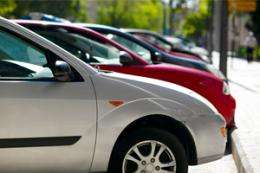Using active transport to commute to work can reduce the weight gain common to most adults. According to an Australian study in the American Journal of Preventive Medicine, urban residents who drive to work gain more weight than those who do not commute by car.
"Commuting is a relevant health behavior even for those who are sufficiently physically active in their leisure time," say the study authors, led by Takemi Sugiyama, a behavioral epidemiologist at Baker IDI Heart and Diabetes Institute in Melbourne. In order to achieve the level of physical activity needed to prevent weight gain, it may be more realistic to accumulate physical activity through active transport, rather than adding exercise to weekly leisure-time routines.
Overall, the 822 adults surveyed gained about 3.5 pounds during the four-year study. Daily car commuters gained the most weight, while those who drove only occasionally or never drove gained smaller amounts. Daily drivers, even if they engaged in weekly exercise, gained on average 3 pounds more than non-car commuters. The only people who avoided weight gain altogether were non-car commuters who also achieved recommended levels of exercise.
"Public health, urban planning, and transportation initiatives … are needed to prevent weight gain through facilitating active transport and leisure-time physical activity," the researchers note. They surmise that the level of physical activity needed for weight maintenance, 150 to 250 minutes a week, may be best achieved by a combination of active transport and exercise. There may also be differences in diet between car commuters and non-car commuters, which were not looked at in the study. More than 85 percent of Americans drive to work, according to the U.S. Census Bureau.
"For most Americans, it is challenging to find a safe route to work or shopping due to factors such as traffic concerns, lack of sidewalks, or protected bike paths," says Penny Gordon-Larsen, Ph.D., a public health expert at The University of North Carolina at Chapel Hill.
Until these factors improve, she comments, there are ways to build more activity into daily life. She recommends "standing while working, taking stairs, activity breaks, doing active work at home … anything but sitting still."
Along with increasing opportunities for walking or cycling to work, reducing the time spent sitting in a car may be an important public health strategy, the researchers conclude.
Journal information: American Journal of Preventive Medicine
Provided by Health Behavior News Service



.jpg)

















